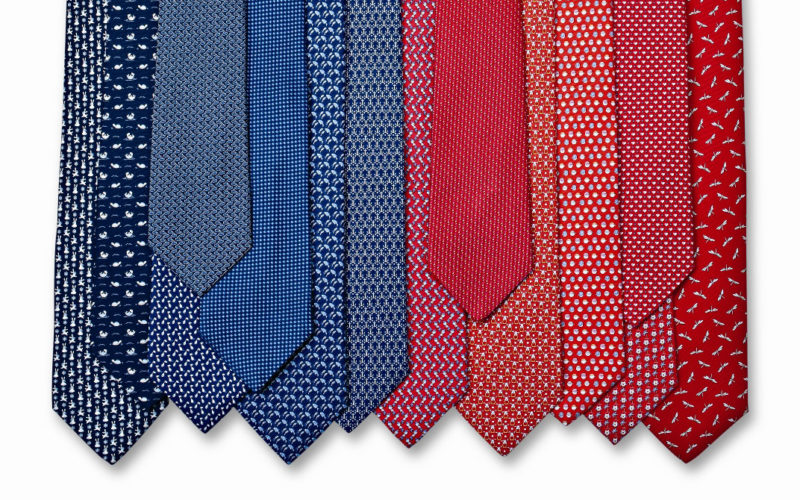Q. You sometimes write about a certain tie knot for a certain piece of clothing. I always use what I guess is a half-Windsor; it’s what my dad taught me. Can I use this for everything?
A. Yes, if you like to use only one knot, a half-Windsor is one of the two you might choose. It falls between the most traditional, most casual knot, known as the four-in-hand, and the much larger, more formal, and quite dated full-Windsor. But the half-Windsor does not suit all men’s personalities.
People may not remember what else you are wearing, yet they often remember your tie.
Most men have a particular style of dressing that makes them feel comfortable and makes them look appropriately put together. It’s usually either a traditional style that leans toward Ivy League preppy, or a more fashion-forward, stylish look that emphasizes a trimmer/snugger (and perhaps younger) fit. Each of these is correct and each style has its share of men who are fans.
A man looks well-dressed when his choices are smartly consistent. Choosing elements that go together shows that he knows what he is doing. If his suit and shirt clearly go with one style of dressing and then he accessorizes them with a tie that does not, he is projecting a lack of consistency. The truth is that it’s usually not the tie itself that is wrong, but the knot used to tie it.
Here are simple guidelines for the two ways of dressing:
- A traditional look is more casual. It includes a slightly looser cut suit or tweed sports jacket, often an Oxford cloth shirt with a button-down collar and button cuffs, and a necktie tied with a small, tight four-in-hand knot. That is the narrow, slightly askew knot that most conservative dressers have been tying all their lives. The tie itself might be a solid-color knit or a rougher textured silk in a large paisley pattern.
- A more modern and nattier look combines a trimmer cut suit or blazer, a dressier French-cuff shirt with a straight-point or spread collar, and a silk tie tied with a wider half-Windsor knot, that’s symmetrical and triangle-shaped. The knot’s larger size helps fill the open space of a spread collar. Tie patterns that go with this look include board-room type pin-dots, stripes, small overall neat foulards, geometric prints, and heavy woven solid-color silks.
All the ties in your closet can be tied with either knot. But, when you decide on which knot to use, you are establishing the overall look that you present to the world. I believe a man projects his sartorial ability far more clearly by dressing consistently than by dressing expensively. Be sure you do not mix any outright “wrong” combinations, such as an elegant Saville Row suit with a knit tie in a too-casual four-in-hand knot, or the opposite look – jeans and a wool tie with a too-dressy full-Windsor knot. Still, you need not limit all your combinations exclusively to one style. There is no reason why a college professor cannot dress in a quiet preppy way all week long, with a knit tie in a four-in-hand knot, and then choose to “dress up” in a suit for a rather formal weekend event and tie a half-Windsor knot in his dressier shiny silk tie.
No matter which knot you prefer, I urge you to pay attention to how you tie it. Your technique should include creating a “dimple” (or depression) that is centered just under the knot. A dimple makes a huge difference. When it is missing, the effect is not quite polished.
Please send your men’s dress and grooming questions and comments to MALE CALL: Lois.Fenton@prodigy.net









